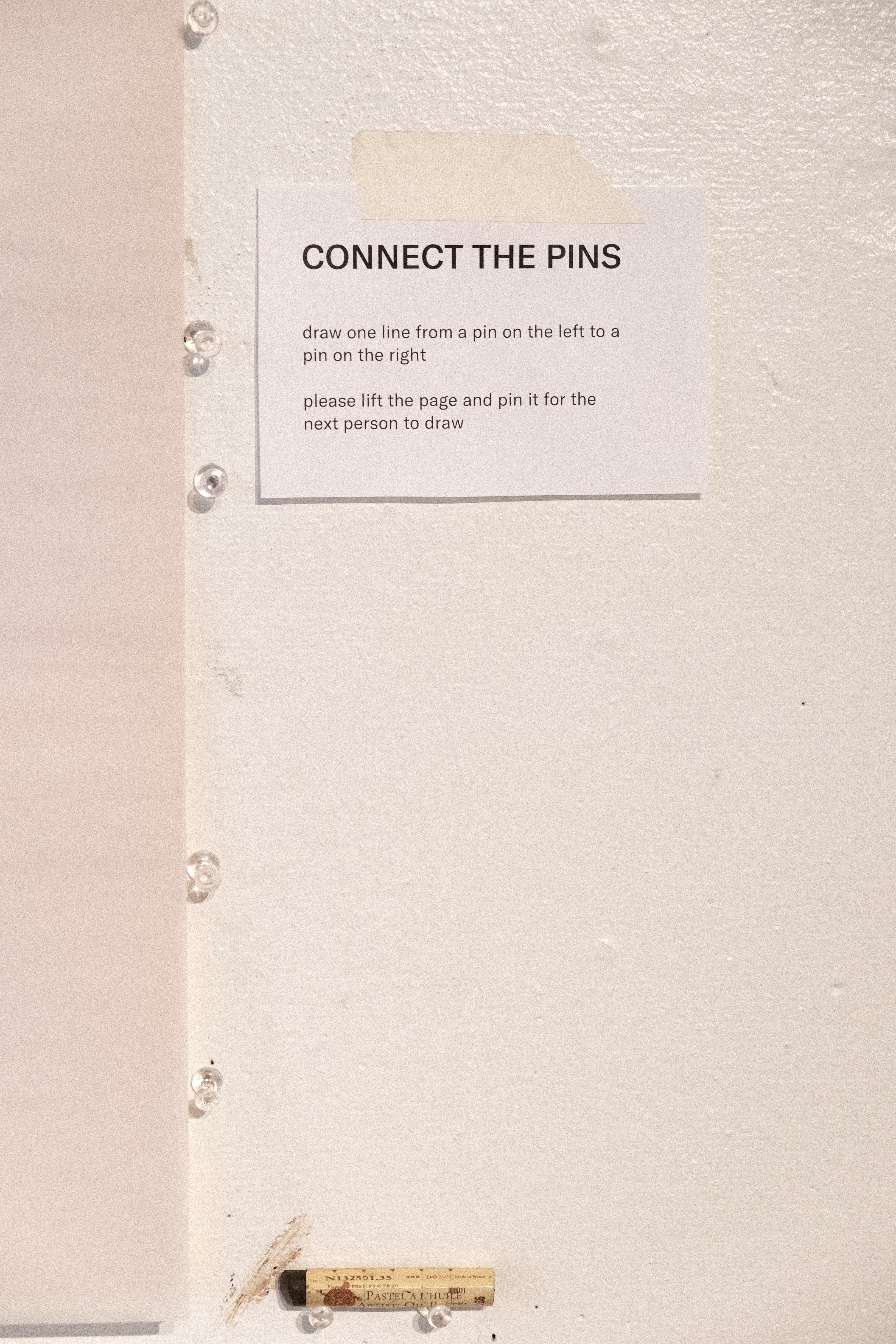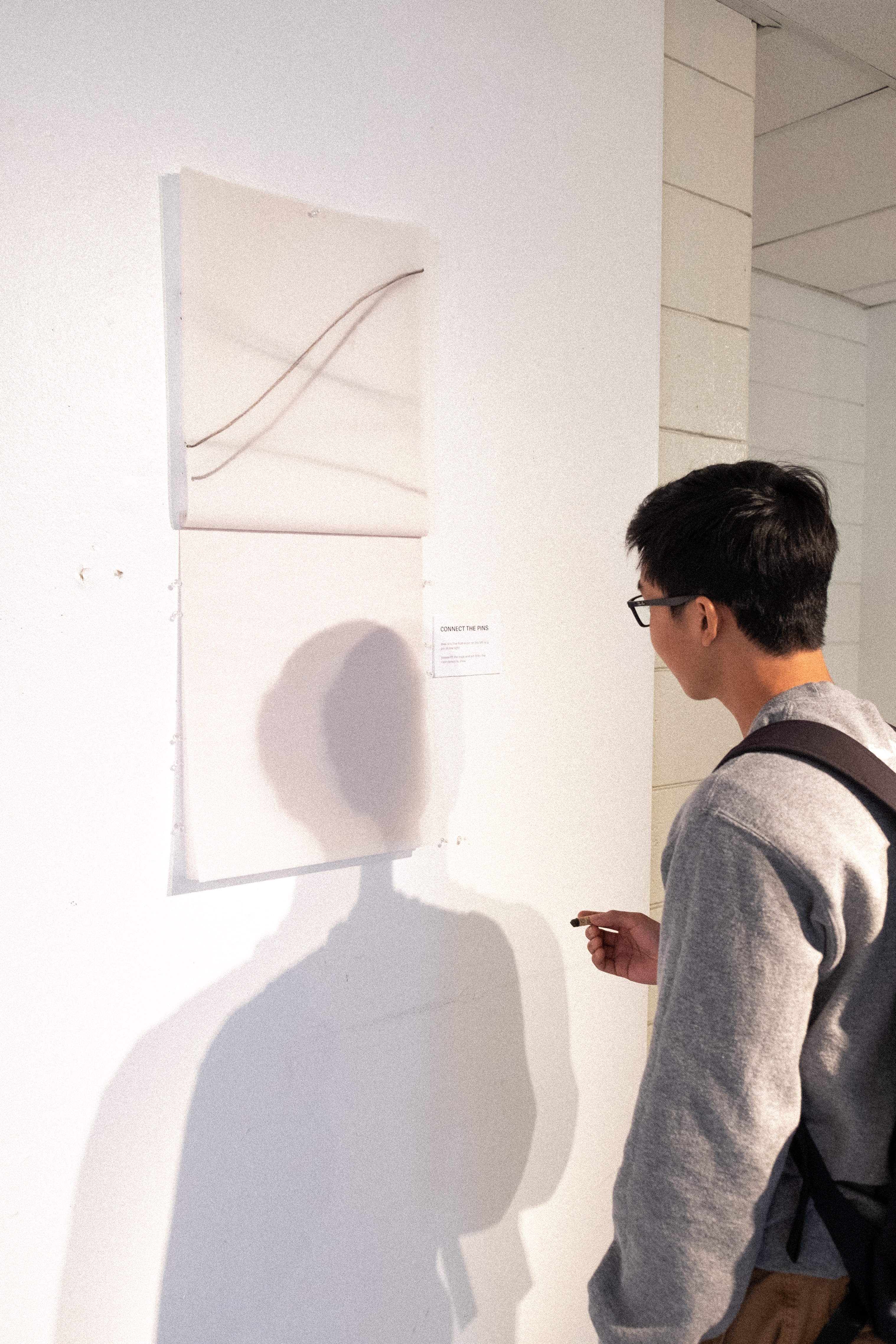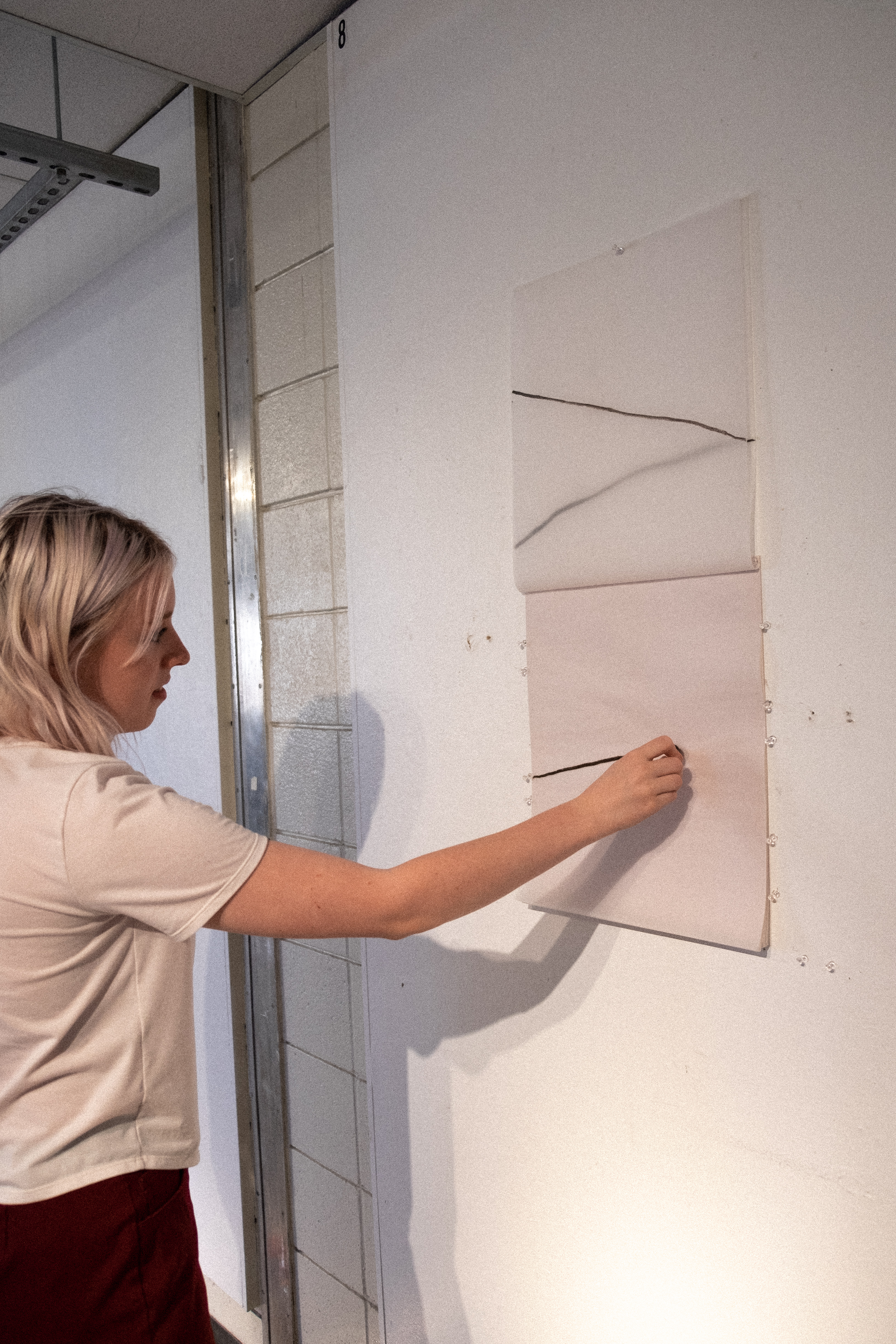Part 02: Please Draw a Line explores user’s relationship to the design process.
OBJECTIVE
I wanted to explore the design process in relation to imperfections. In this case I was looking at three key criteria: inconsistent, impermanent, and incomplete (taken from Wabi Sabi for Artists... by Leonard Koren) when thinking about my installation.
In an attempt to take the appreciation of imperfections further than simply highlighting them, I wanted to create a process that would deliberately allow for these inconsistencies naturally. By creating constraints for the viewers that interacted, it yielded a natural, yet refined, result.
In an attempt to take the appreciation of imperfections further than simply highlighting them, I wanted to create a process that would deliberately allow for these inconsistencies naturally. By creating constraints for the viewers that interacted, it yielded a natural, yet refined, result.
INSTALLATION
Materials included trace paper, push pins, oil pastel.
A pad of trace paper was pinned to the wall with equal number of push pins arbitrarily placed on the sides while an oil pastel sat beside it.
The viewers were prompted to draw a single line, connecting a push pin on the left to a push pin on the right and to then lift and pin their completed sheet of paper to the wall. By doing so, they are able to see how to add to the previous layers of lines.
A pad of trace paper was pinned to the wall with equal number of push pins arbitrarily placed on the sides while an oil pastel sat beside it.
The viewers were prompted to draw a single line, connecting a push pin on the left to a push pin on the right and to then lift and pin their completed sheet of paper to the wall. By doing so, they are able to see how to add to the previous layers of lines.
CONCLUSION
I appreciated the participation of the audience-how they were intrigued and also surprised by the simplicity of it. I do not know that they necessarily understood the concept being explored through this installation, however it was interesting to see their contributions to the process.
An interesting observation was how a pattern was beginning to form. People tended to use the same pins or pins within close proximity of each other. Towards the end, someone took a different approach and drew a line with loops rather than a straight line. After this, the person that followed also drew a similar type of line. I imagine that more like this would follow after breaking the system. Technically speaking, these lines are allowed within the constraints.
This process of conditional design allows for freedom within rules, producing inconsistent, yet deliberate, results. If done again, I would probably focus more on the communication in order to give the audience a clearer realization of the intent. This being said, I also challenge whether or not the artifact needs to be understood or if its the idea, or in this case the process, that is more important.
An interesting observation was how a pattern was beginning to form. People tended to use the same pins or pins within close proximity of each other. Towards the end, someone took a different approach and drew a line with loops rather than a straight line. After this, the person that followed also drew a similar type of line. I imagine that more like this would follow after breaking the system. Technically speaking, these lines are allowed within the constraints.
This process of conditional design allows for freedom within rules, producing inconsistent, yet deliberate, results. If done again, I would probably focus more on the communication in order to give the audience a clearer realization of the intent. This being said, I also challenge whether or not the artifact needs to be understood or if its the idea, or in this case the process, that is more important.




